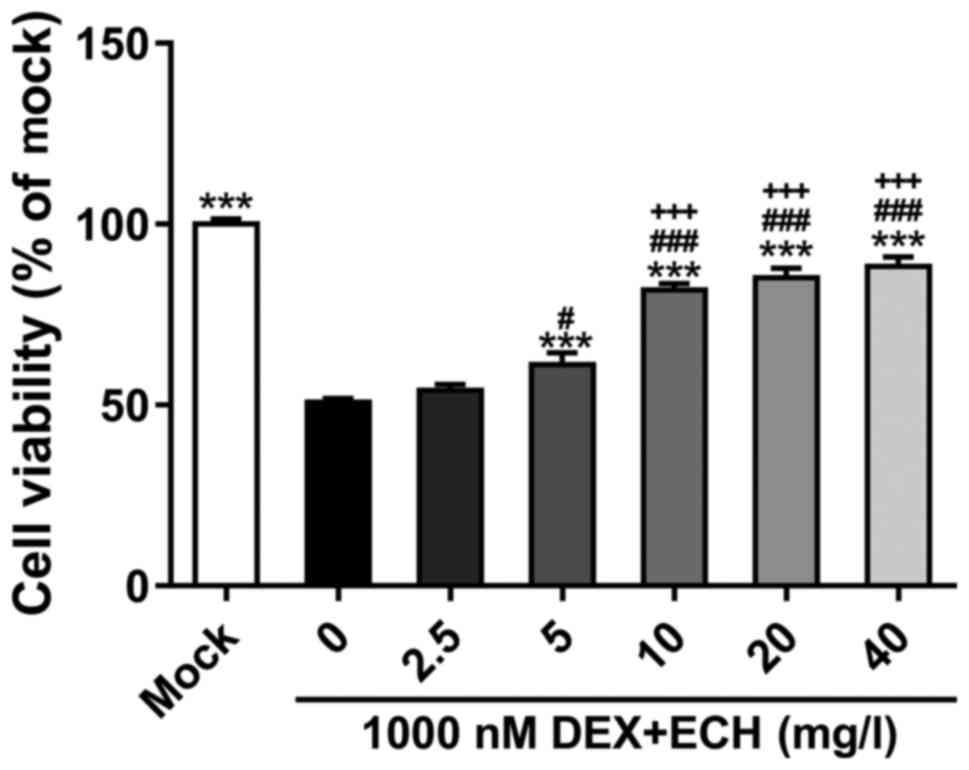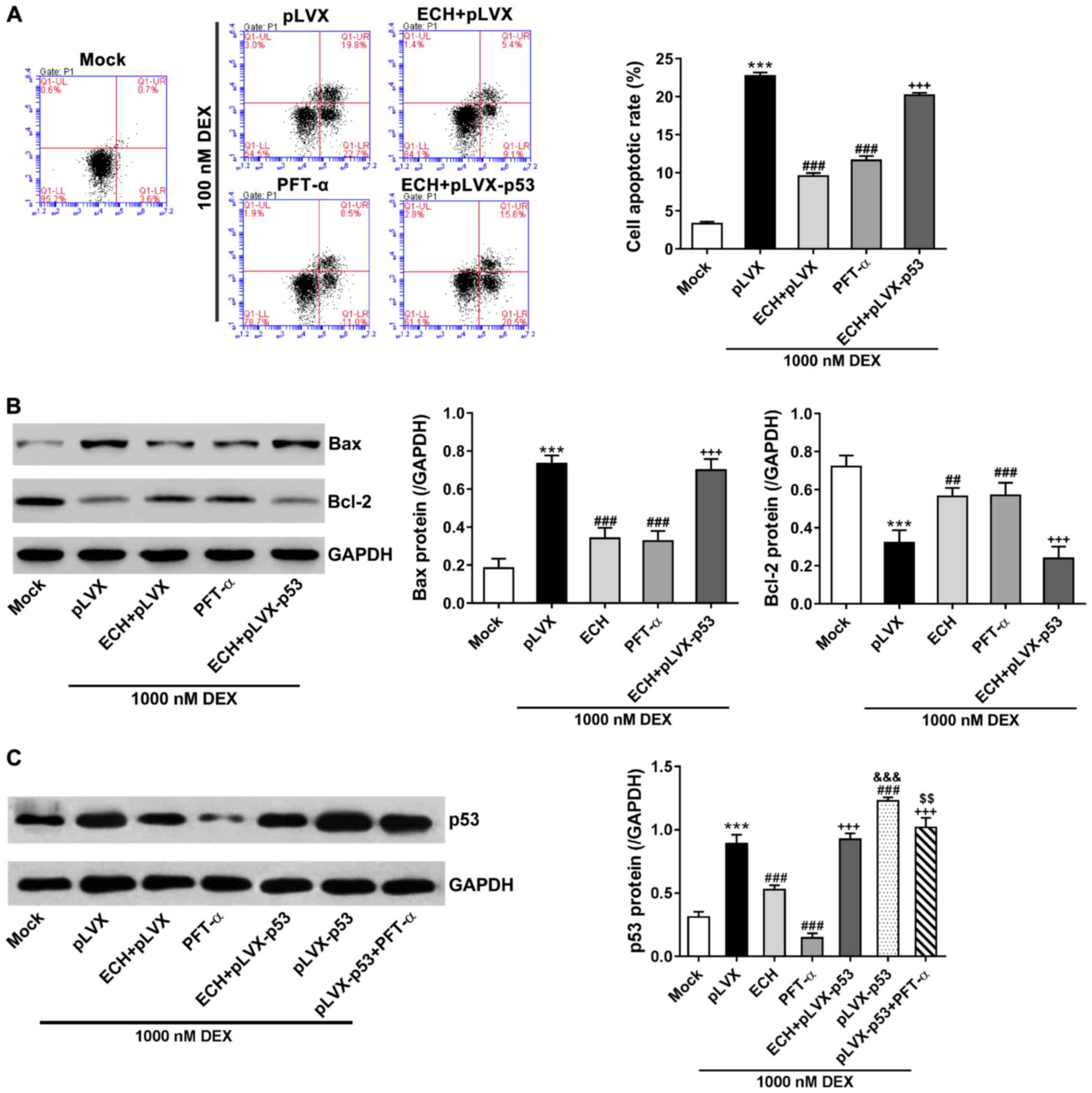|
1
|
Buttgereit F, Burmester G-R and Lipworth
BJ: Optimised glucocorticoid therapy: The sharpening of an old
spear. Lancet. 365:801–803. 2005. View Article : Google Scholar : PubMed/NCBI
|
|
2
|
Schäcke H, Döcke W-D and Asadullah K:
Mechanisms involved in the side effects of glucocorticoids.
Pharmacol Ther. 96:23–43. 2002. View Article : Google Scholar : PubMed/NCBI
|
|
3
|
Fukushima W, Fujioka M, Kubo T, Tamakoshi
A, Nagai M and Hirota Y: Nationwide epidemiologic survey of
idiopathic osteonecrosis of the femoral head. Clin Orthop Relat
Res. 468:2715–2724. 2010. View Article : Google Scholar : PubMed/NCBI
|
|
4
|
Civitelli R and Ziambaras K: Epidemiology
of glucocorticoid-induced osteoporosis. J Endocrinol Invest.
31:(Suppl):. 2–6. 2008.PubMed/NCBI
|
|
5
|
Gudbjornsson B, Juliusson UI and
Gudjonsson FV: Prevalence of long term steroid treatment and the
frequency of decision making to prevent steroid induced
osteoporosis in daily clinical practice. Ann Rheum Dis. 61:32–36.
2002. View Article : Google Scholar : PubMed/NCBI
|
|
6
|
van Staa TP, Geusens P, Pols HA, de Laet
C, Leufkens HG and Cooper C: A simple score for estimating the
long-term risk of fracture in patients using oral glucocorticoids.
QJM. 98:191–198. 2005. View Article : Google Scholar : PubMed/NCBI
|
|
7
|
Rickard DJ, Sullivan TA, Shenker BJ, Leboy
PS and Kazhdan I: Induction of rapid osteoblast differentiation in
rat bone marrow stromal cell cultures by dexamethasone and BMP-2.
Dev Biol. 161:218–228. 1994. View Article : Google Scholar : PubMed/NCBI
|
|
8
|
Li H, Qian W, Weng X, Wu Z, Li H, Zhuang
Q, Feng B and Bian Y: Glucocorticoid receptor and sequential P53
activation by dexamethasone mediates apoptosis and cell cycle
arrest of osteoblastic MC3T3-E1 cells. PLoS One. 7:e370302012.
View Article : Google Scholar : PubMed/NCBI
|
|
9
|
Stoch SA, Saag KG, Greenwald M, Sebba AI,
Cohen S, Verbruggen N, Giezek H, West J and Schnitzer TJ:
Once-weekly oral alendronate 70 mg in patients with
glucocorticoid-induced bone loss: A 12-month randomized,
placebo-controlled clinical trial. J Rheumatol. 36:1705–1714. 2009.
View Article : Google Scholar : PubMed/NCBI
|
|
10
|
Wallach S, Cohen S, Reid DM, Hughes RA,
Hosking DJ, Laan RF, Doherty SM, Maricic M, Rosen C, Brown J, et
al: Effects of risedronate treatment on bone density and vertebral
fracture in patients on corticosteroid therapy. Calcif Tissue Int.
67:277–285. 2000. View Article : Google Scholar : PubMed/NCBI
|
|
11
|
Reid DM, Devogelaer J-P, Saag K, Roux C,
Lau CS, Reginster JY, Papanastasiou P, Ferreira A, Hartl F, Fashola
T, et al: HORIZON investigators: Zoledronic acid and risedronate in
the prevention and treatment of glucocorticoid-induced osteoporosis
(HORIZON): A multicentre, double-blind, double-dummy, randomised
controlled trial. Lancet. 373:1253–1263. 2009. View Article : Google Scholar : PubMed/NCBI
|
|
12
|
Langdahl BL, Rajzbaum G, Jakob F, Karras
D, Ljunggren O, Lems WF, Fahrleitner-Pammer A, Walsh JB, Barker C,
Kutahov A, et al: Reduction in fracture rate and back pain and
increased quality of life in postmenopausal women treated with
teriparatide: 18-Month data from the European Forsteo Observational
Study (EFOS). Calcif Tissue Int. 85:484–493. 2009. View Article : Google Scholar : PubMed/NCBI
|
|
13
|
Saag KG, Zanchetta JR, Devogelaer JP,
Adler RA, Eastell R, See K, Krege JH, Krohn K and Warner MR:
Effects of teriparatide versus alendronate for treating
glucocorticoid-induced osteoporosis: Thirty-six-month results of a
randomized, double-blind, controlled trial. Arthritis Rheum.
60:3346–3355. 2009. View Article : Google Scholar : PubMed/NCBI
|
|
14
|
Jia Y, Guan Q, Guo Y and Du C:
Echinacoside stimulates cell proliferation and prevents cell
apoptosis in intestinal epithelial MODE-K cells by up-regulation of
transforming growth factor-β1 expression. J Pharmacol Sci.
118:99–108. 2012. View Article : Google Scholar : PubMed/NCBI
|
|
15
|
Kuang R, Sun Y, Yuan W, Lei L and Zheng X:
Protective effects of echinacoside, one of the phenylethanoid
glycosides, on H(2)O(2)-induced cytotoxicity in PC12 cells. Planta
Med. 75:1499–1504. 2009. View Article : Google Scholar : PubMed/NCBI
|
|
16
|
Kuang R, Sun Y and Zheng X: Suppression of
nitric oxide implicated in the protective effect of echinacoside on
H2O2-induced PC12 cell injury. Nat Prod
Commun. 5:571–574. 2010.PubMed/NCBI
|
|
17
|
Deng M, Zhao JY, Tu PF, Jiang Y, Li ZB and
Wang YH: Echinacoside rescues the SHSY5Y neuronal cells from
TNFalpha-induced apoptosis. Eur J Pharmacol. 505:11–18. 2004.
View Article : Google Scholar : PubMed/NCBI
|
|
18
|
Geng X, Tian X, Tu P and Pu X:
Neuroprotective effects of echinacoside in the mouse MPTP model of
Parkinson's disease. Eur J Pharmacol. 564:66–74. 2007. View Article : Google Scholar : PubMed/NCBI
|
|
19
|
Zhao Q, Gao J, Li W and Cai D:
Neurotrophic and neurorescue effects of echinacoside in the
subacute MPTP mouse model of Parkinson's disease. Brain Res.
1346:224–236. 2010. View Article : Google Scholar : PubMed/NCBI
|
|
20
|
Zhu M, Lu C and Li W: Transient exposure
to echinacoside is sufficient to activate Trk signaling and protect
neuronal cells from rotenone. J Neurochem. 124:571–580. 2013.
View Article : Google Scholar : PubMed/NCBI
|
|
21
|
Wu Y, Li L, Wen T and Li YQ: Protective
effects of echinacoside on carbon tetrachloride-induced
hepatotoxicity in rats. Toxicology. 232:50–56. 2007. View Article : Google Scholar : PubMed/NCBI
|
|
22
|
Li X, Gou C, Yang H, Qiu J, Gu T and Wen
T: Echinacoside ameliorates D-galactosamine plus
lipopolysaccharide-induced acute liver injury in mice via
inhibition of apoptosis and inflammation. Scand J Gastroenterol.
49:993–1000. 2014. View Article : Google Scholar : PubMed/NCBI
|
|
23
|
Zhang Y, Xing J, Ai T, Wen T, Guan L and
Zhao J: Protection of echinacoside against acute lung injury caused
by oleic acid in rats. Free Radic Res. 41:798–805. 2007. View Article : Google Scholar : PubMed/NCBI
|
|
24
|
Li F, Yang Y, Zhu P, Chen W, Qi D, Shi X,
Zhang C, Yang Z and Li P: Echinacoside promotes bone regeneration
by increasing OPG/RANKL ratio in MC3T3-E1 cells. Fitoterapia.
83:1443–1450. 2012. View Article : Google Scholar : PubMed/NCBI
|
|
25
|
Li F, Yang X, Yang Y, Guo C, Zhang C, Yang
Z and Li P: Antiosteoporotic activity of echinacoside in
ovariectomized rats. Phytomedicine. 20:549–557. 2013. View Article : Google Scholar : PubMed/NCBI
|
|
26
|
Livak KJ and Schmittgen TD: Analysis of
relative gene expression data using real-time quantitative PCR and
the 2(-Delta Delta C(T)) method. Methods. 25:402–408. 2001.
View Article : Google Scholar : PubMed/NCBI
|
|
27
|
Miyashita T, Krajewski S, Krajewska M,
Wang HG, Lin HK, Liebermann DA, Hoffman B and Reed JC: Tumor
suppressor p53 is a regulator of bcl-2 and bax gene expression in
vitro and in vivo. Oncogene. 9:1799–1805. 1994.PubMed/NCBI
|
|
28
|
Zhao Q, Yang X, Cai D, Ye L, Hou Y, Zhang
L, Cheng J, Shen Y, Wang K and Bai Y: Echinacoside protects against
MPP+-induced neuronal apoptosis via
ros/atf3/chop pathway regulation. Neurosci Bull.
32:349–362. 2016. View Article : Google Scholar : PubMed/NCBI
|
|
29
|
Chua CC, Chua BH, Chen Z, Landy C and
Hamdy RC: Dexamethasone induces caspase activation in murine
osteoblastic MC3T3-E1 cells. Biochim Biophys Acta. 1642:79–85.
2003. View Article : Google Scholar : PubMed/NCBI
|
|
30
|
Gross A, McDonnell JM and Korsmeyer SJ:
BCL-2 family members and the mitochondria in apoptosis. Genes Dev.
13:1899–1911. 1999. View Article : Google Scholar : PubMed/NCBI
|













